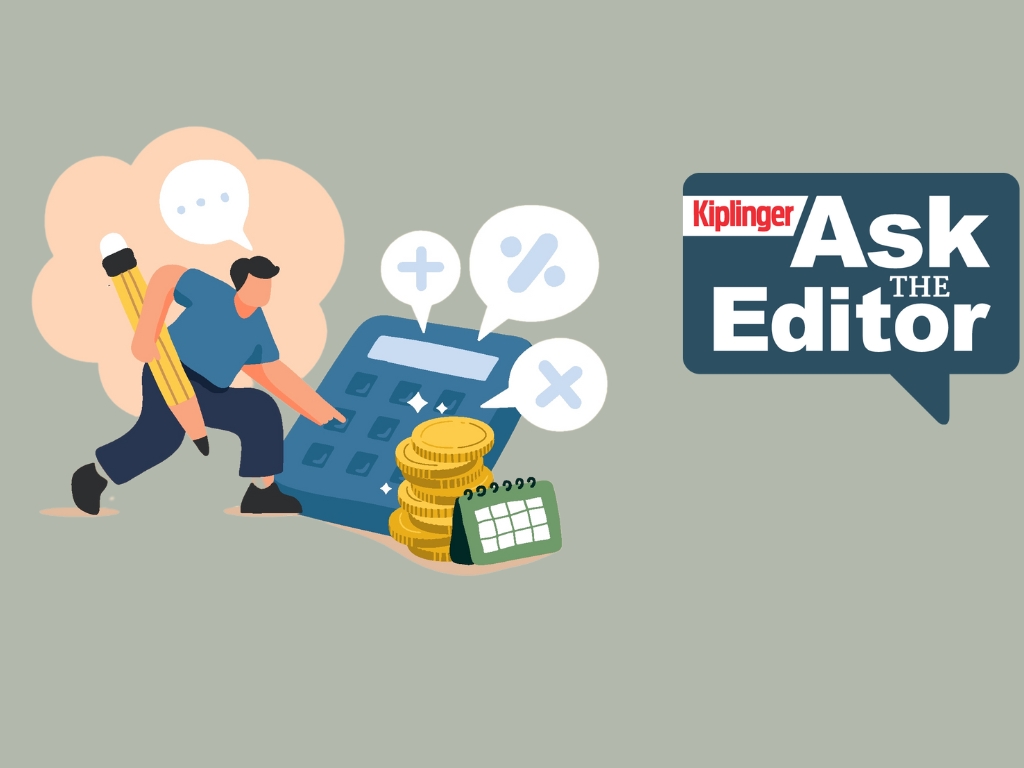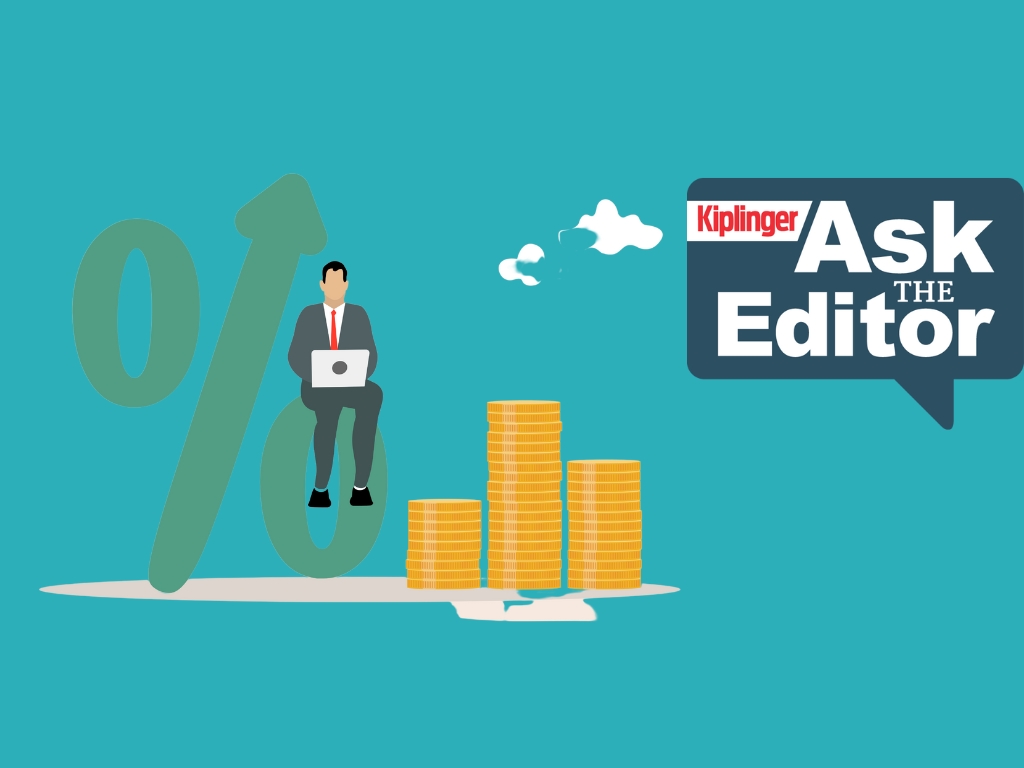1099-K Reporting Change for the 2025 Tax Season
An IRS 1099-K threshold change will impact millions of tax bills this filing season.


Millions of Americans receive 1099-Ks from third-party payment platforms like PayPal, Venmo, Stripe, and more every year. But in 2025, that number is expected to soar. The IRS announced the reporting threshold for the 1099-K form will drop from $20,000 to $5,000 this tax filing season, plummeting each year until $600.
As Kiplinger has reported, the new IRS 1099-K reporting change was supposed to go into effect two years ago. However, the adjustment has since been delayed twice by the IRS, and modified to a phase-in approach. All of this has resulted in online vendors scrambling to keep up.
What should you do if you receive an incorrect Form 1099-K? And how does an additional tax form mean you could be at more risk of an audit? Here’s what you need to know.

Sign up for Kiplinger’s Free E-Newsletters
Profit and prosper with the best of expert advice on investing, taxes, retirement, personal finance and more - straight to your e-mail.
Profit and prosper with the best of expert advice - straight to your e-mail.
Related: New IRS 1099-K Changes: What to Expect from PayPal, Venmo, More
1099-K threshold for the 2024 tax year
Taxpayers selling goods and services on online marketplaces or using third-party payment apps will typically receive a 1099-K form.
- If the total transaction(s) amount to $5,000 or more, IRS rules dictate that the vendor must send you and the IRS a 1099-K.
- This differs considerably from the prior 1099-K threshold of $20,000 and 200 transactions.
Taxpayers have always been and are still required to report all taxable income to the IRS. But in years past, fewer taxpayers were at risk of nontaxable transactions being reported to the IRS.
That was due to the much higher thresholds ($20,000/200 transactions) meaning that only a limited number of taxpayers with significant transaction volume would receive a 1099-K form. This reduced the likelihood of the IRS scrutinizing lower-value transactions.
While the new lower thresholds don’t change the taxability of certain items, online vendors might accidentally include them in your 1099-K. (So, more taxpayers may have to justify transactions as having a “personal purpose.”)
For instance, nontaxable transactions to friends and family could be misclassified as taxable.
PayPal, reports that scammers use its ‘Friends and Family’ payment option to cheat. That could cause vendors like PayPal to analyze the true nature of those transactions.
Here are a few other items that shouldn’t trigger taxes, but you might want to watch for on your next 1099-K in case they’re included:
- Splitting rent with a roommate
- Receiving funds for a ride-share, meal, or holiday gift
- Selling personal items at a loss*
*Note: While you can’t claim a loss on the sold personal item, you can offset the income received with what you originally paid on your return. The net effect is that no tax may be owed on personal items sold at a loss but talk with a tax consultant for professional help.
1099-K impact on taxes and audit risk
As mentioned earlier, just because an income item is included on your 1099-K, and is reportable, it’s not necessarily taxable. Your 1099-K could also come to you with an incorrect amount (personal, nontaxable items included by mistake).
However, taxpayers may feel pressured to pay tax on tax-free items simply because they’re on the Form 1099-K. This is the main criticism of the lower thresholds.
Taxpayers who have never received the 1099-K before may receive one. These casual, online sellers may become ensnared in the lower income threshold, particularly since not reporting 1099-K income can create a red flag for an IRS audit.
This is particularly true for the 1099-K, where reports have shown the IRS has underutilized this form in the past for auditing returns. The agency agreed to look more closely at its process for identifying 1099-Ks to audit, and these lower thresholds may fuel that flame.
What to do if your 1099-K has an error
Here are some preventative measures you can take to help ensure your 1099-K will be correct at year-end, and also corrective steps you can take if your form comes to you with incorrect information:
- Preventative. Throughout the year, document all your transactions across all online payment vendors, making sure you have proof (receipts, invoices, a note from a roommate, etc.) showing whether something is personal or business
- Preventative. If you haven’t already, set up your professional account for all reportable transactions, and keep those separate from a personal account
- Corrective. Contact the vendor immediately for a corrected 1099-K if you notice yours is incorrect
- Preventative and Corrective. Consult with a tax professional for help
The future of the 1099-K: eBay and legislation
The implementation of the 1099-K threshold was delayed twice because online sellers and third-party platforms like eBay and Etsy required additional time to prepare for the new filing requirements.
In a press release last year, eBay's CEO stated, “...we need Congress to continue working towards a permanent solution.”
That sentiment is shared by many others in the industry.
Related Content
- IRS 1099-K Changes: What to Expect from PayPal, Venmo, and More
- Types of Income the IRS Doesn't Tax
- How Long Should You Keep Tax Records?
Get Kiplinger Today newsletter — free
Profit and prosper with the best of Kiplinger's advice on investing, taxes, retirement, personal finance and much more. Delivered daily. Enter your email in the box and click Sign Me Up.

Kate is a CPA with experience in audit and technology. As a Tax Writer at Kiplinger, Kate believes that tax and finance news should meet people where they are today, across cultural, educational, and disciplinary backgrounds.
-
 Married? Five Ways to Ensure Your Estate Plans Work in Tandem
Married? Five Ways to Ensure Your Estate Plans Work in TandemGetting on the same page now means fewer potential problems when it counts.
By Kiplinger Advisor Collective
-
 12 Investments No Retiree Should Make
12 Investments No Retiree Should MakeIn retirement, when it's wise to take fewer risks with your nest egg, some investments are just nuts.
By David Rodeck
-
 Trump’s Tax Cut Risks Your SNAP, Medicaid Benefits
Trump’s Tax Cut Risks Your SNAP, Medicaid BenefitsTax Cuts The GOP budget blueprint could slash lifesaving programs for millions of U.S. households.
By Gabriella Cruz-Martínez
-
 Ask the Editor: Reader Questions, April 18 — Amended Returns
Ask the Editor: Reader Questions, April 18 — Amended ReturnsIn our Ask the Editor: Taxes, April 18, round-up — Joy Taylor, The Kiplinger Tax Letter Editor, answers questions on amended returns, mortgages and deductions.
By Joy Taylor
-
 How Many IRS Commissioners Have We Gone Through This Year?
How Many IRS Commissioners Have We Gone Through This Year?IRS Who were the former IRS commissioners, and why did they resign? Find out how IRS turnover can impact your taxes.
By Kate Schubel
-
 How the Trump Harvard IRS Tax Threat Could Impact You
How the Trump Harvard IRS Tax Threat Could Impact YouTax Law Trump's latest higher education showdown raises fundamental questions that could reach beyond Harvard's nonprofit tax status.
By Kelley R. Taylor
-
 Tax Day 2025: Don’t Miss These Freebies, Food Deals and Discounts
Tax Day 2025: Don’t Miss These Freebies, Food Deals and DiscountsTax Day You can score some sweet deals on April 15 in some select restaurants like Burger King, Shake Shack, and more.
By Gabriella Cruz-Martínez
-
 Tax Time: Does Your Kid Influencer Owe Taxes?
Tax Time: Does Your Kid Influencer Owe Taxes?State Tax Some minors are making big money on social media. Here’s how to know if they need to file taxes.
By Gabriella Cruz-Martínez
-
 Ask the Editor: Reader Questions, April 11 — IRAs, RMDs and PTPs.
Ask the Editor: Reader Questions, April 11 — IRAs, RMDs and PTPs.Ask the Editor: Taxes, April 11, 2025 — Joy Taylor, The Kiplinger Tax Letter Editor, answers questions on Roth IRAs, RMDs and other retirement accounts.
By Joy Taylor
-
 Trump Plans to Terminate IRS Direct File program
Trump Plans to Terminate IRS Direct File programTax Filing The IRS Direct File program was piloted last year in 12 states and has since expanded to 25. But will it last under the Trump administration?
By Gabriella Cruz-Martínez